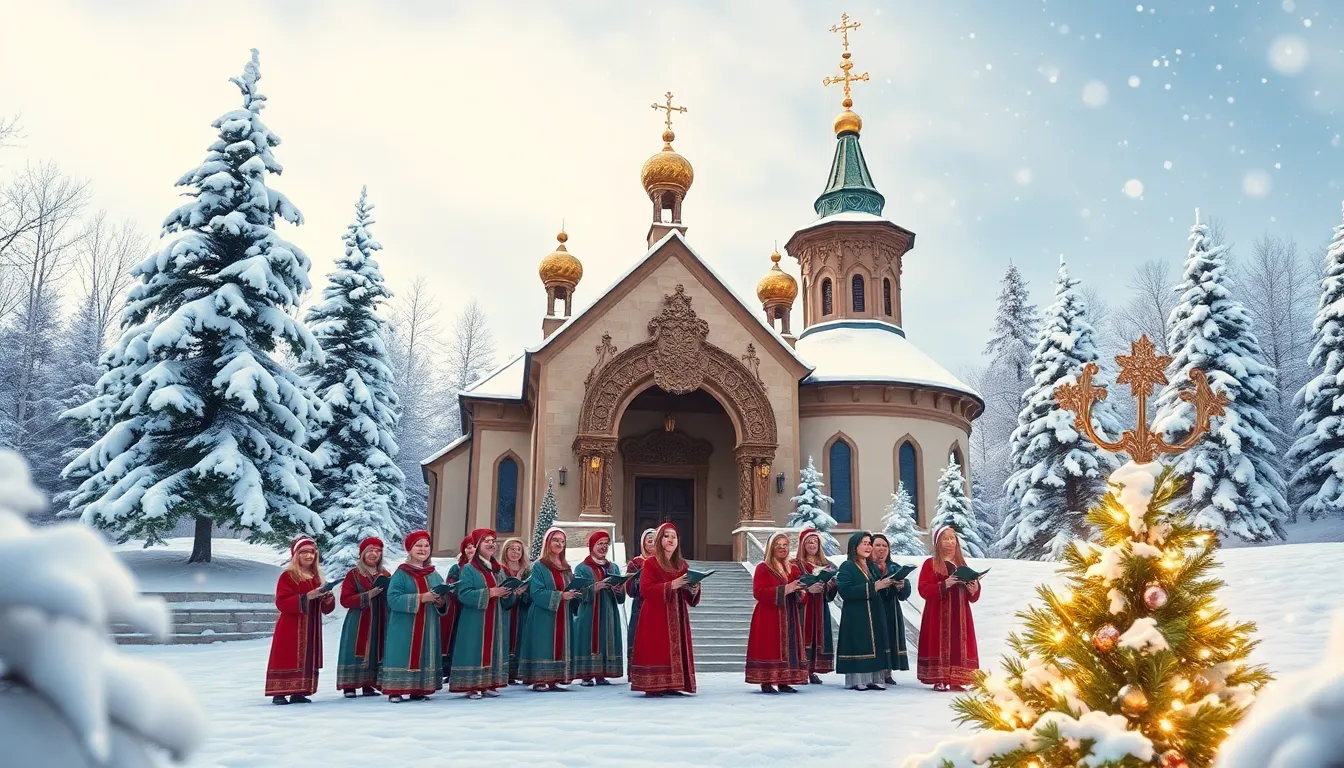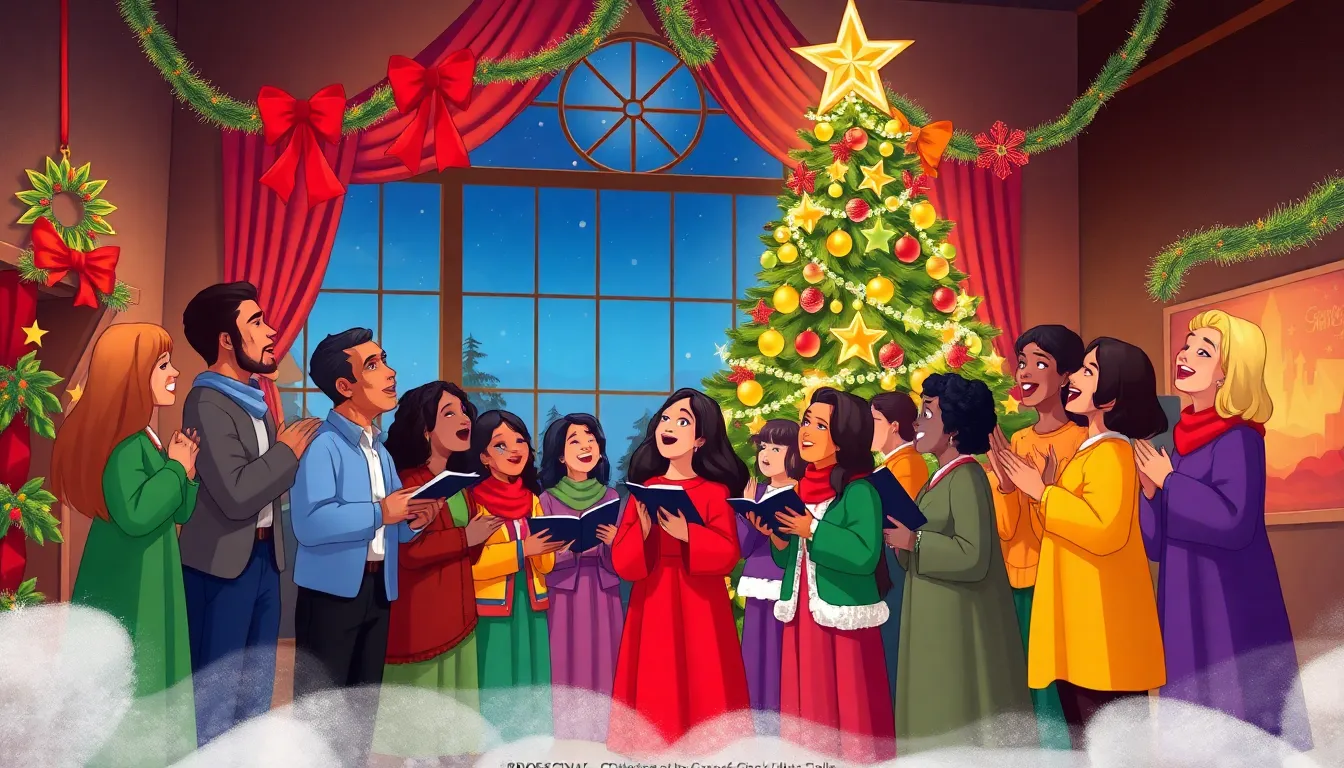Table of Contents
ToggleAs the holiday season approaches, familiar melodies fill the air, and few tunes are as instantly recognizable as “Carol of the Bells.” This catchy carol has a way of getting stuck in your head—like that one relative who overstays their welcome at family gatherings. But who’s the genius behind this festive earworm?
Originally composed by Ukrainian musician Mykola Leontovych in 1916, the song has transformed over the years into a beloved holiday classic. With its lively rhythm and enchanting harmonies, it’s no wonder that “Carol of the Bells” has become a staple in Christmas celebrations around the world. So grab a cup of cocoa, and let’s dive into the fascinating story of how this delightful tune came to be, and why it continues to ring in the holiday spirit year after year.
Overview of Carol of The Bells
“Carol of the Bells” stems from a choral composition created by Mykola Leontovych in 1916. The song, originally titled “Shchedryk,” draws upon Ukrainian folk themes celebrating the arrival of spring. The lively rhythm and unique melodic structure set it apart, making it memorable and engaging.
In the 1930s, Peter J. Wilhousky adapted “Shchedryk” into English, transforming it into the Christmas classic known as “Carol of the Bells.” This version retains the essence of the original while capturing the festive spirit of the holiday season. It features a four-part harmony that many choirs and ensembles perform today.
The song’s popularity surged after its 1947 broadcast by the Mormon Tabernacle Choir. This performance introduced the carol to a broader audience, solidifying its status as a holiday favorite. Commercial recordings soon followed, with artists across various genres putting their unique spin on the classic.
“Carol of the Bells” is characterized by its distinct, repeated motifs. The driving rhythm and dynamic shifts contribute to its energetic feel, making it suitable for myriad arrangements from orchestral to choral to pop renditions. Its presence in films, television shows, and Christmas specials further cemented its reputation as an enduring holiday standard.
Throughout the years, many musicians have celebrated this iconic piece. Various adaptations reflect personal interpretations while staying true to its original spirit. “Carol of the Bells” continues to resonate with audiences around the world, embodying the joy and excitement of the holiday season.
The Origins of Carol of The Bells


“Carol of the Bells” has rich origins rooted in Ukrainian culture. The song began as a choral piece named “Shchedryk,” composed by Mykola Leontovych in 1916.
Historical Context
“Shchedryk” first celebrated the arrival of spring, intertwining folk themes with melodic charm. Ukrainian tradition has its influences on the carol, showcasing vibrant cultural expressions through music. In the 1930s, Peter J. Wilhousky adapted the original composition into English, linking it to Christmas festivities. His version revamped the melody, while preserving its engaging nature. The carol quickly gained fame, notably after its 1947 broadcast by the Mormon Tabernacle Choir. This performance introduced “Carol of the Bells” to a vast audience, helping it transition from a regional piece to a global Christmas classic.
Cultural Significance
Over the years, “Carol of the Bells” has attained significant cultural relevance. It evokes festive cheer and captures the spirit of the holiday season, becoming synonymous with Christmas celebrations. The carol’s recognizable motifs enhance its appeal, making it a popular choice for choirs, orchestras, and pop artists alike. Its presence in media, from films to Christmas specials, reinforces its status as a holiday staple. Artists continually reinterpret the song, showcasing their creativity while preserving its core essence. This adaptability has ensured that “Carol of the Bells” resonates with diverse audiences, proving its lasting impact on holiday traditions globally.
The Composer of Carol of The Bells
“Carol of the Bells” shines brightly as a holiday classic, originally composed by Mykola Leontovych in 1916. This vibrant piece captures the essence of Ukrainian folklore through its joyous melodies.
Mykola Leontovych’s Contribution
Mykola Leontovych crafted “Carol of the Bells” as part of his choral work “Shchedryk.” Ukrainian traditions inspired this composition, marking a celebration of the spring season. Melodic elements showcase the rich cultural heritage of Ukraine, emphasizing the importance of musical storytelling. Leontovych’s innovative harmonization added depth, allowing choirs to embrace the intricate layers of sound. His composition’s unique characteristics laid the foundation for subsequent adaptations, enabling it to transcend cultural boundaries.
The Role of Peter J. Wilhousky
Peter J. Wilhousky played a pivotal role in transforming “Shchedryk” into its well-known Christmas version. He adapted the original Ukrainian lyrics into English in the 1930s, broadening its appeal. This adaptation preserved the festive spirit while making it accessible to English-speaking audiences. Wilhousky’s arrangement featured robust four-part harmonies, enhancing the song’s celebratory nature. His influence significantly shaped the carol’s popularity, especially after its memorable 1947 broadcast by the Mormon Tabernacle Choir. This introduction to a wider audience solidified its status as a beloved holiday staple.
The Evolution of Carol of The Bells
“Carol of the Bells” has undergone numerous transformations since its inception. Variations of the piece reflect different cultural influences, showcasing its versatility. Adaptations range from traditional choral arrangements to modern pop versions. Each rendition highlights the song’s vibrant melodies while introducing unique elements.
Variations and Adaptations
Numerous variations exist for “Carol of the Bells.” Choral groups often perform it with rich harmonies that emphasize its festive tone. Instrumental versions, including orchestra and piano adaptations, allow for diverse interpretations. Some artists incorporate jazz or rock elements, further broadening its appeal. Each adaptation maintains the original’s joyful spirit while infusing fresh creativity into the arrangement.
Popular Performances
Popular performances of “Carol of the Bells” elevate its status within holiday traditions. The Mormon Tabernacle Choir’s 1947 broadcast significantly popularized the carol. Various artists, such as Trans-Siberian Orchestra and Pentatonix, have put their unique spin on it, garnering widespread acclaim. Concerts and holiday specials often feature the piece, showcasing its universal appeal. Performances consistently captivate audiences, reinforcing “Carol of the Bells” as a staple during the Christmas season.




